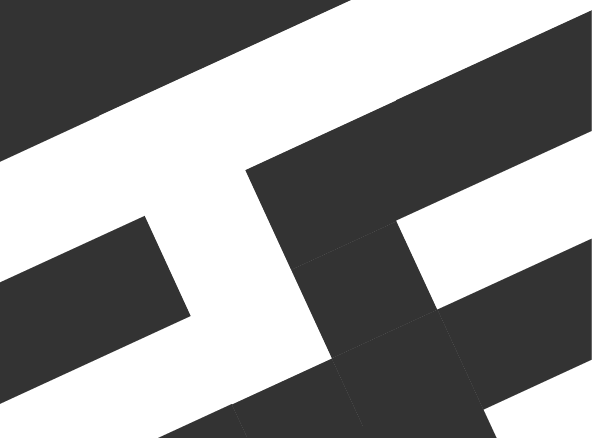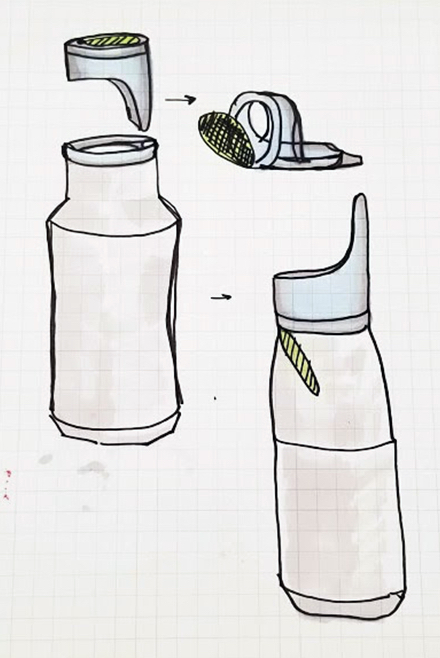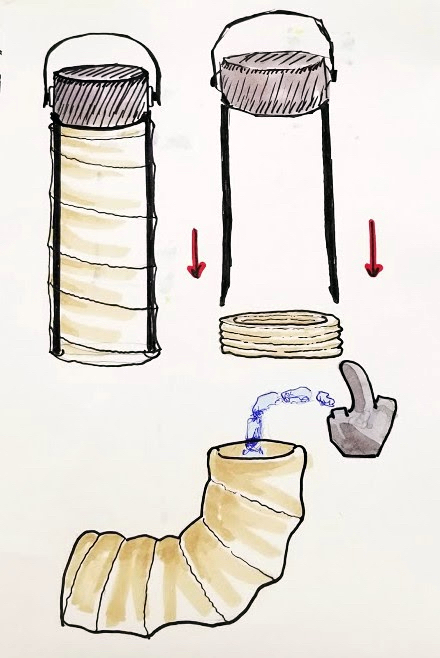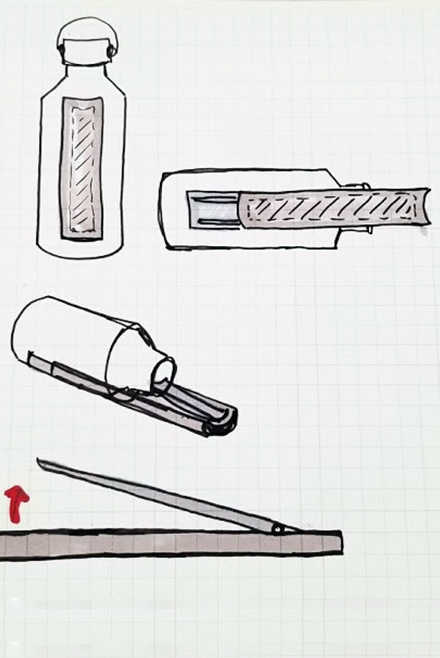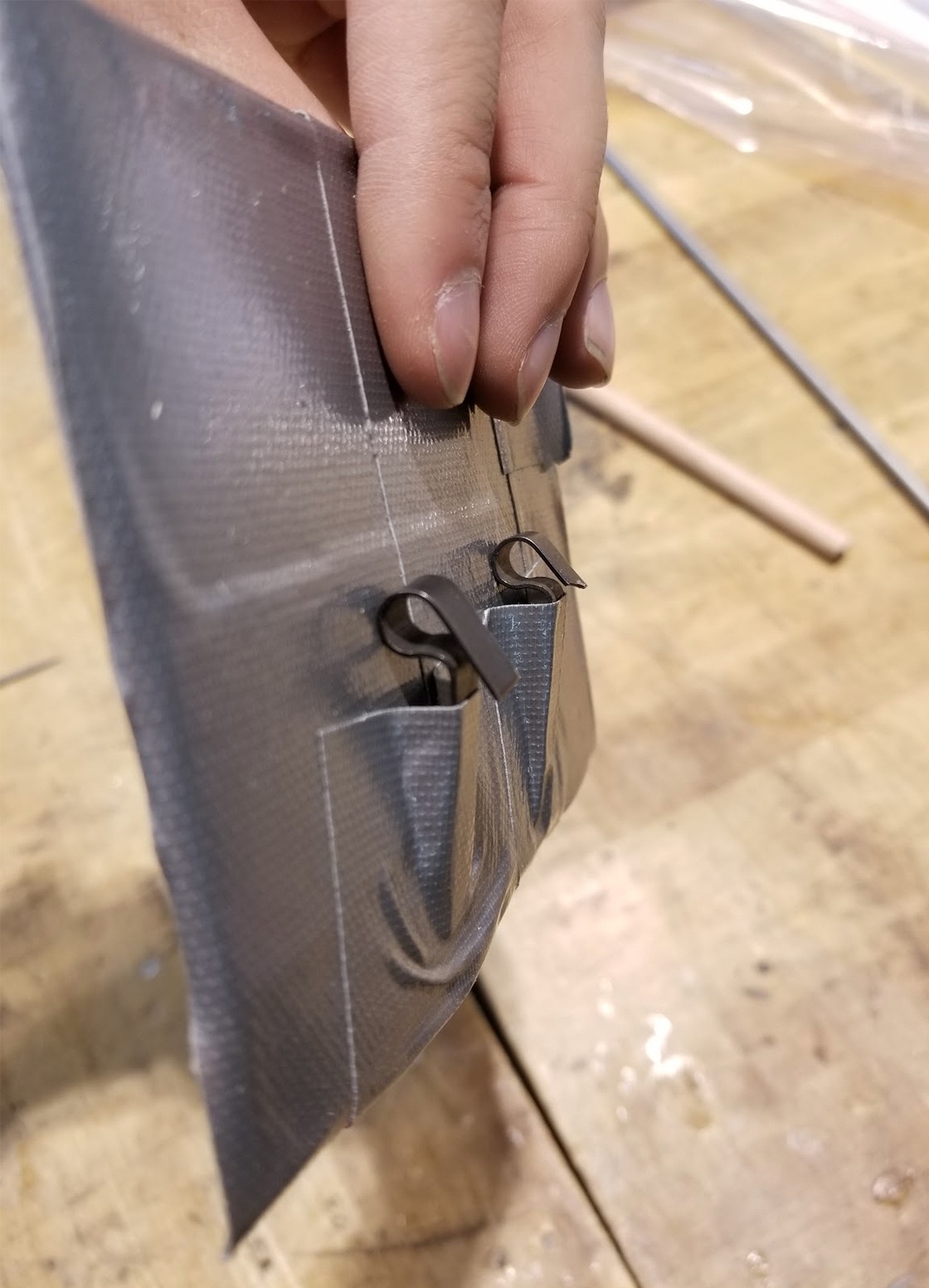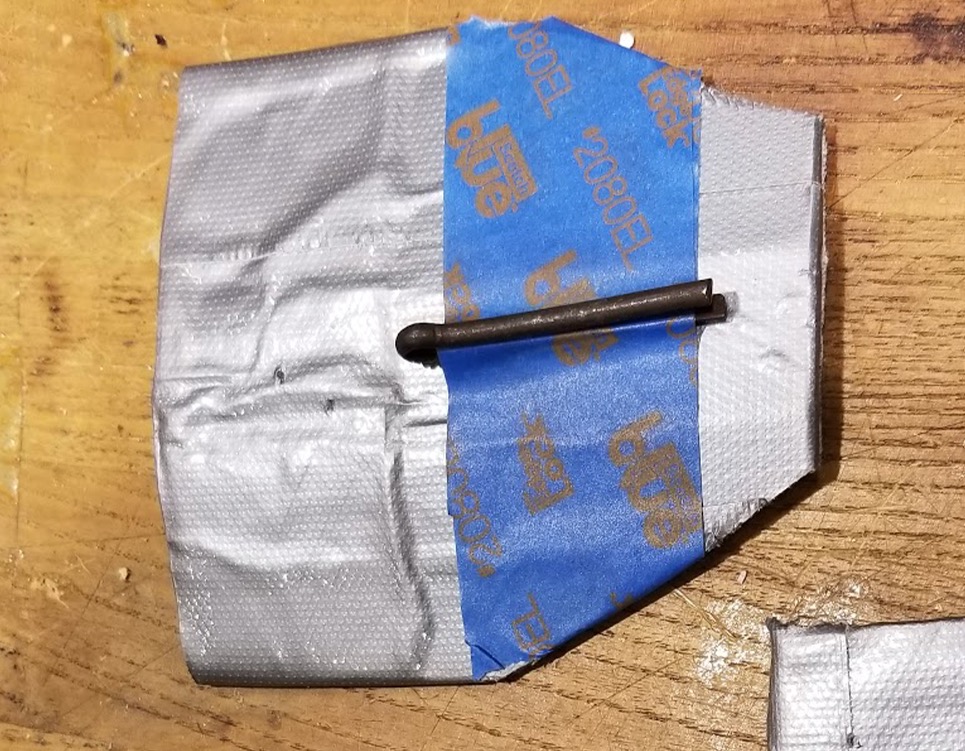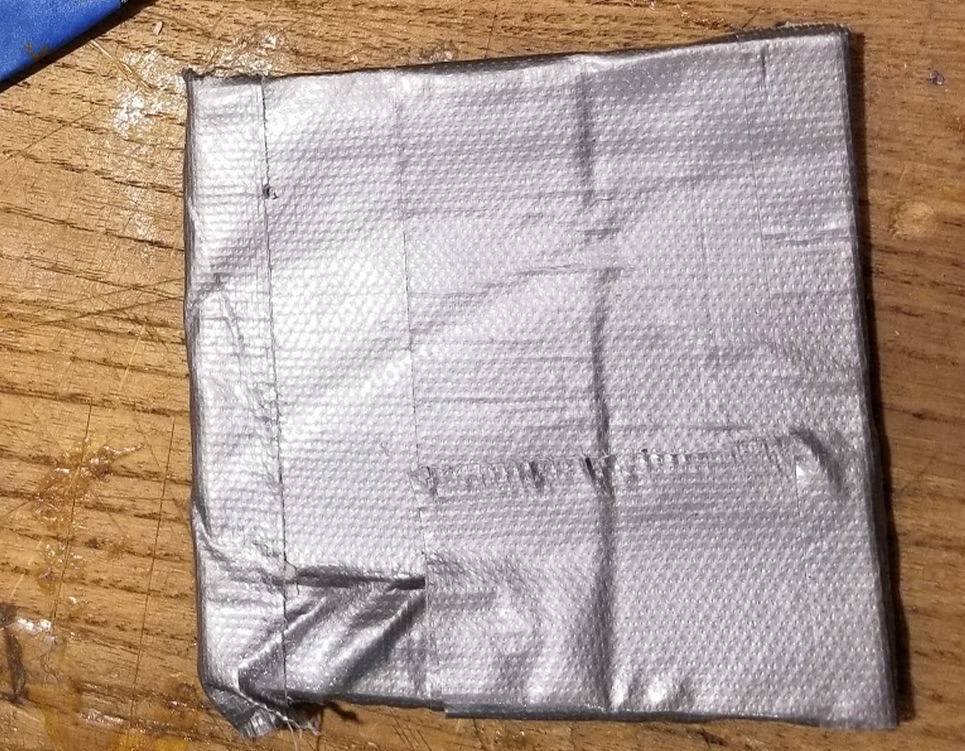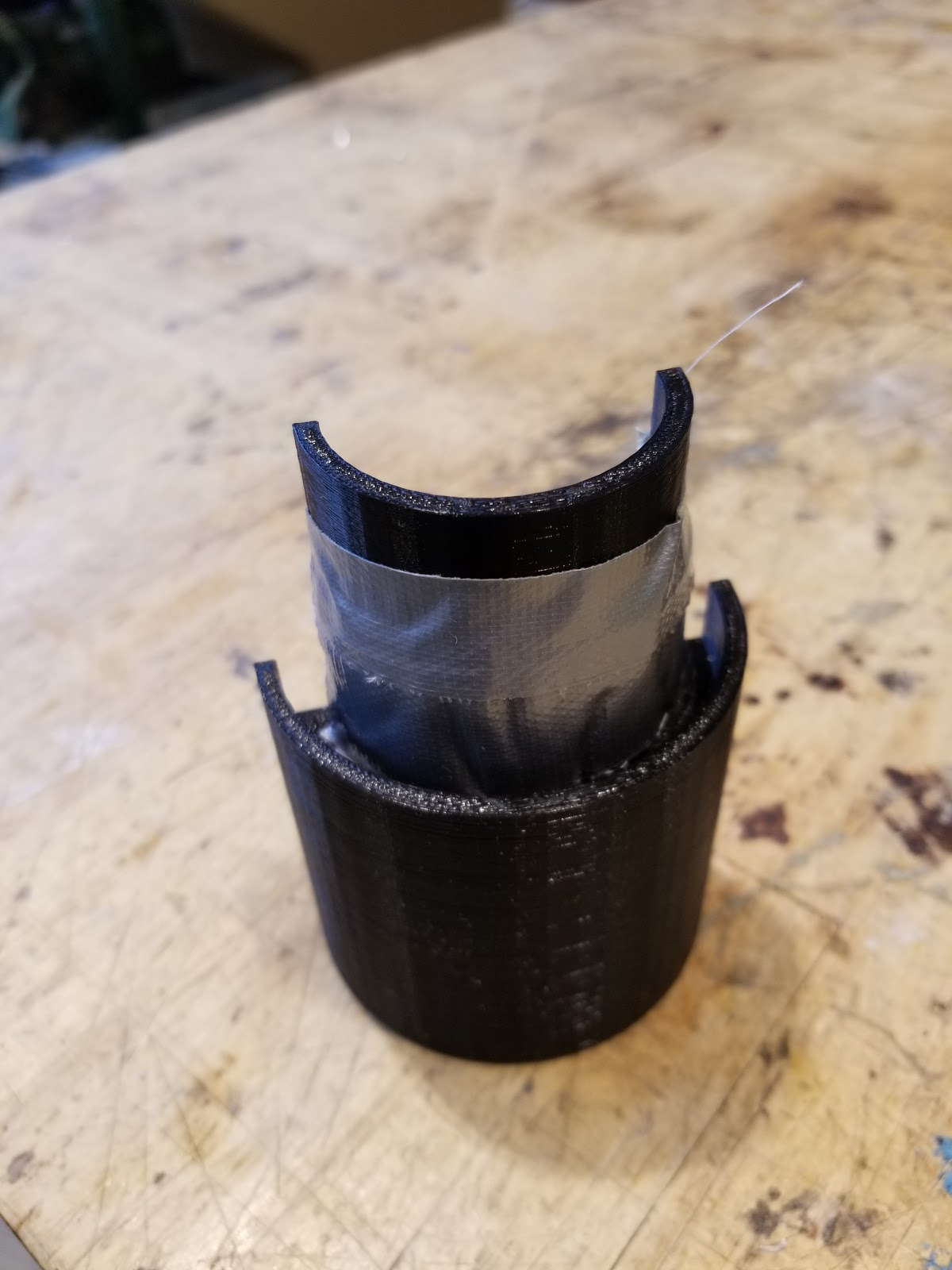Category
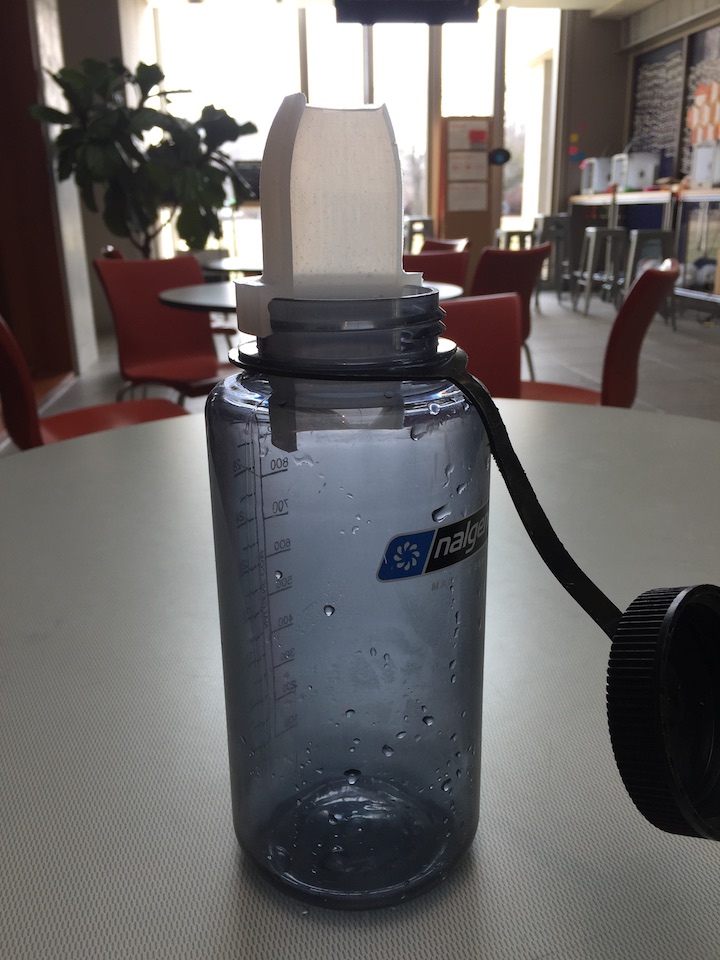
Final prototype of the Fountain Flex
Brief
My team identified the problem space of making people’s interactions with water fountains and sinks more seamless when filling their water bottles by removing pain points and were tasked with imagining and prototyping novel products.
My team outlined two key goals for our prototype:
-
How might we adapt existing water bottles to make the water bottle filling process less difficult without adding significant time or steps?
-
How might we encourage the user to increase their water intake by filling their water bottles more often by making water fountains more accessible
Opportunity Space
There was a clear opportunity space through early research. In a survey sent out to the Northwestern University community, our team discovered that on average users rated the ease of use of water bottles at water fountains without a filling station as a 2.68 out of 5 on a 1-5 ease of use scale.
With filling stations only seen 49% of the time on campus, it is clear that filling water bottles at fountains is an issue even affecting those with some of the most advanced and accessible systems in the world.
To learn more about the pain points surrounding each of these filling stations, we conducted observations around campus, in order to learn about the typical user’s process when filling a water bottle. This was followed by user interviews.
User Requirements
- The design affords easy filling of water bottles at sinks and fountains
- The device can be attached to water bottle when not in use
- The design allows users have one free hand when filling the bottle
- The design ensures a mess free experience
- The device can be easily cleaned
Brainstorm
1st Iteration Mockups
Low fidelity minimum viable prototypes to test brainstorm concepts
2nd Iteration Mockups
Tested with user feedback, observing how users interacted with the device.
Data Analysis
- Calculate performance difference with and without mockup
- Percentage of bottle filled
- Fill time
- Calculate average ease of use for each mockup
3rd Iteration Mockups
-
Slope at top of funnel to direct flow
-
Continuous rim to prevent leaking
4th Iteration Mockups
Improvements
- Slimmer design
- Flexible: can fit range of water bottle diameters
- Water bottle sleeve for easy storage
Reflection
By developing the solution over four design sprints, we were able to adapt to changes and user feedback quickly.
Learned to create high quality prototype using rapid prototyping methods.
